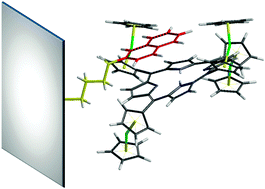Abstract
A bottom-up approach was employed to prepare novel Self-Assembled Monolayers (SAMs) in which a

- This article is part of the themed collection: In honour of Bernard Meunier
* Corresponding authors
a
Dipartimento di Scienze e Tecnologie Chimiche, Università di Roma “Tor Vergata”, Via della Ricerca Scientifica snc, 00133 Rome, Italy
E-mail:
galloni@scienze.uniroma2.it, andrea.vecchi@uniroma2.it
Fax: +39 0672594328
b Dipartimento di Chimica, Università degli Studi di Roma “La Sapienza”, Piazzale Aldo Moro 5, 00185 Rome, Italy
A bottom-up approach was employed to prepare novel Self-Assembled Monolayers (SAMs) in which a

 Please wait while we load your content...
Something went wrong. Try again?
Please wait while we load your content...
Something went wrong. Try again?
A. Vecchi, V. Grippo, B. Floris, A. G. Marrani, V. Conte and P. Galloni, New J. Chem., 2013, 37, 3535 DOI: 10.1039/C3NJ00519D
To request permission to reproduce material from this article, please go to the Copyright Clearance Center request page.
If you are an author contributing to an RSC publication, you do not need to request permission provided correct acknowledgement is given.
If you are the author of this article, you do not need to request permission to reproduce figures and diagrams provided correct acknowledgement is given. If you want to reproduce the whole article in a third-party publication (excluding your thesis/dissertation for which permission is not required) please go to the Copyright Clearance Center request page.
Read more about how to correctly acknowledge RSC content.
 Fetching data from CrossRef.
Fetching data from CrossRef.
This may take some time to load.
Loading related content
